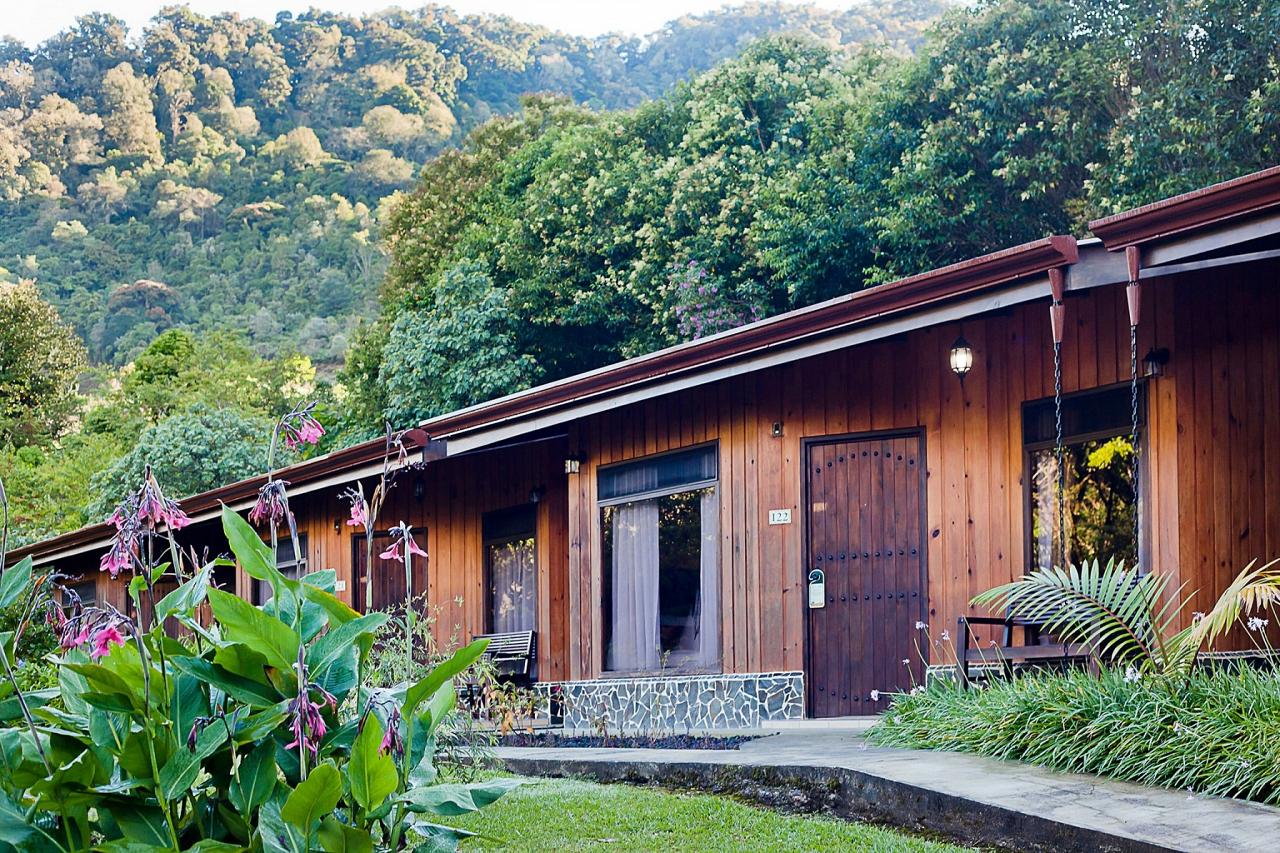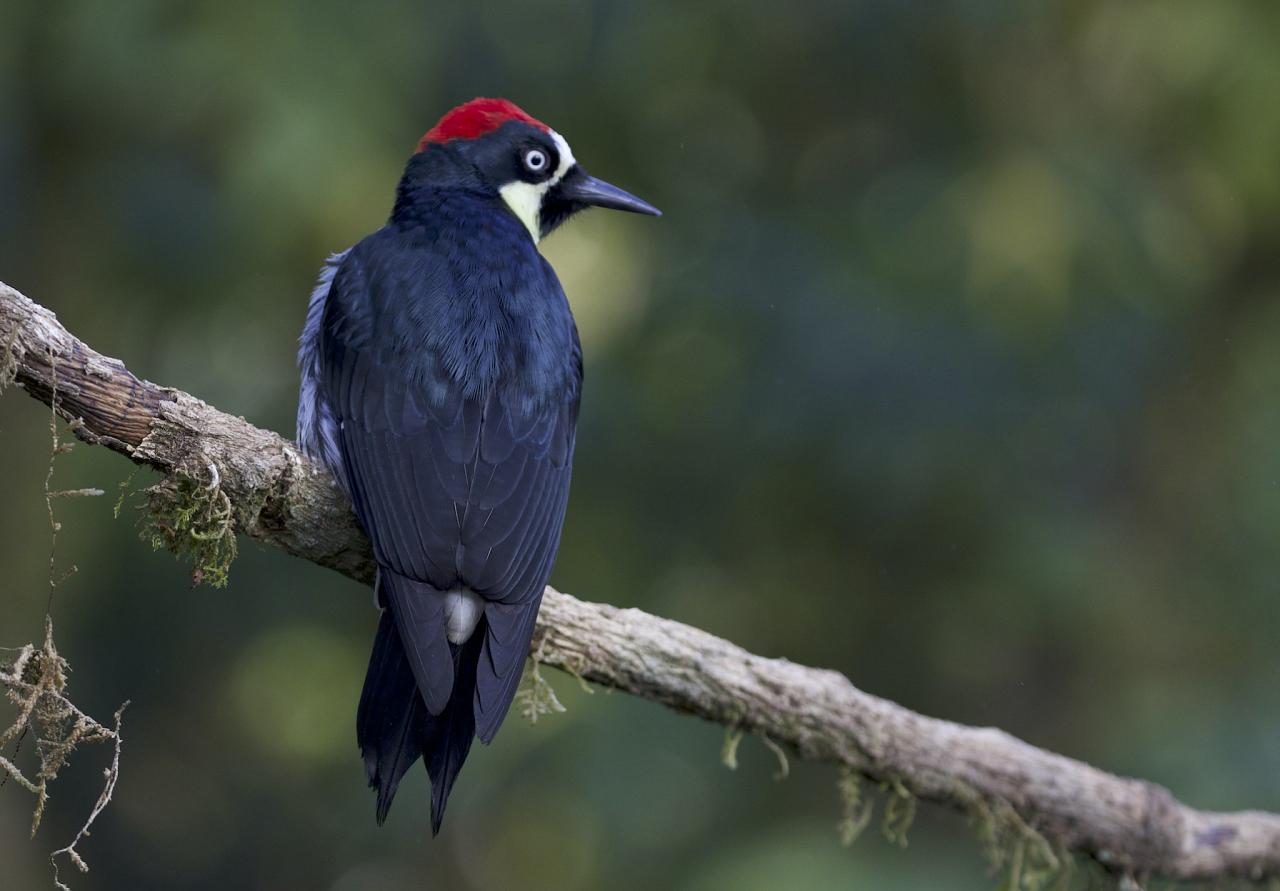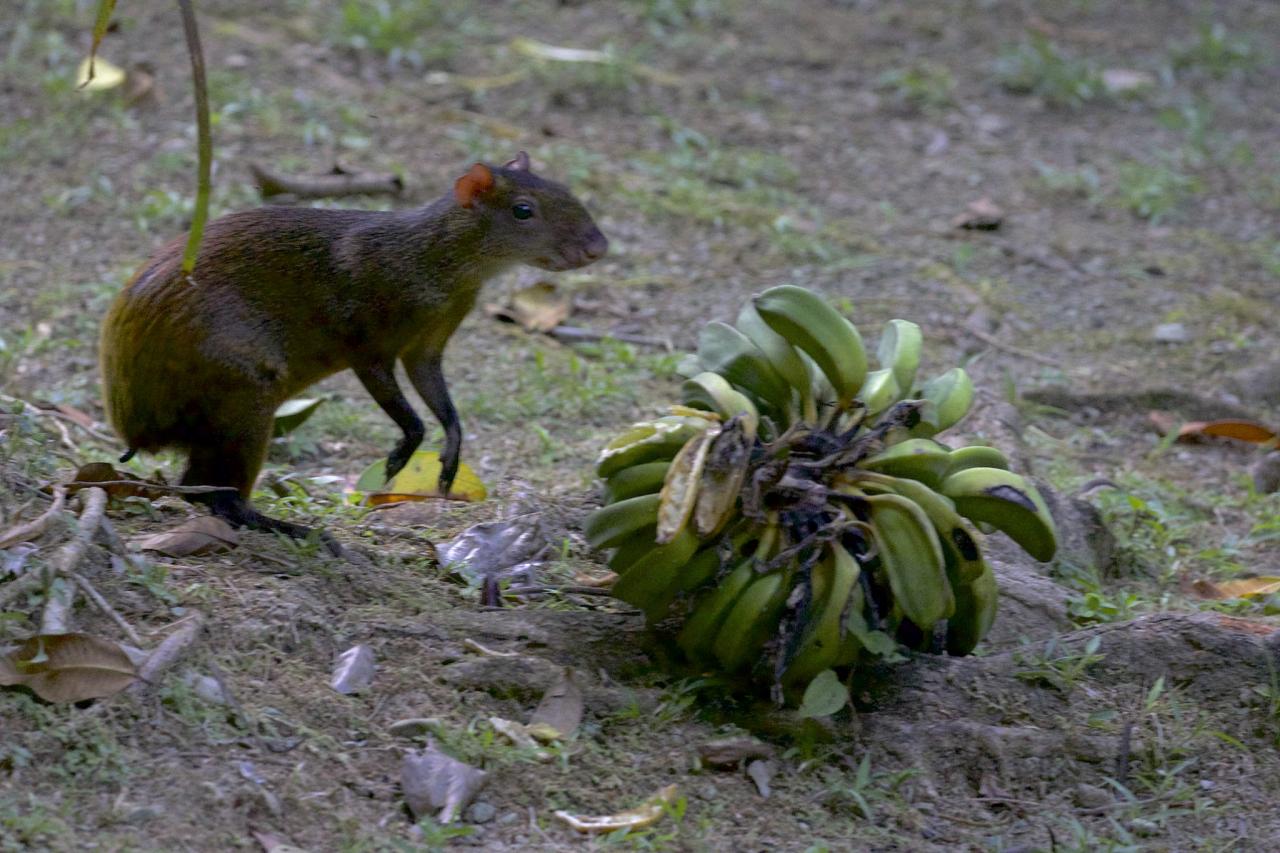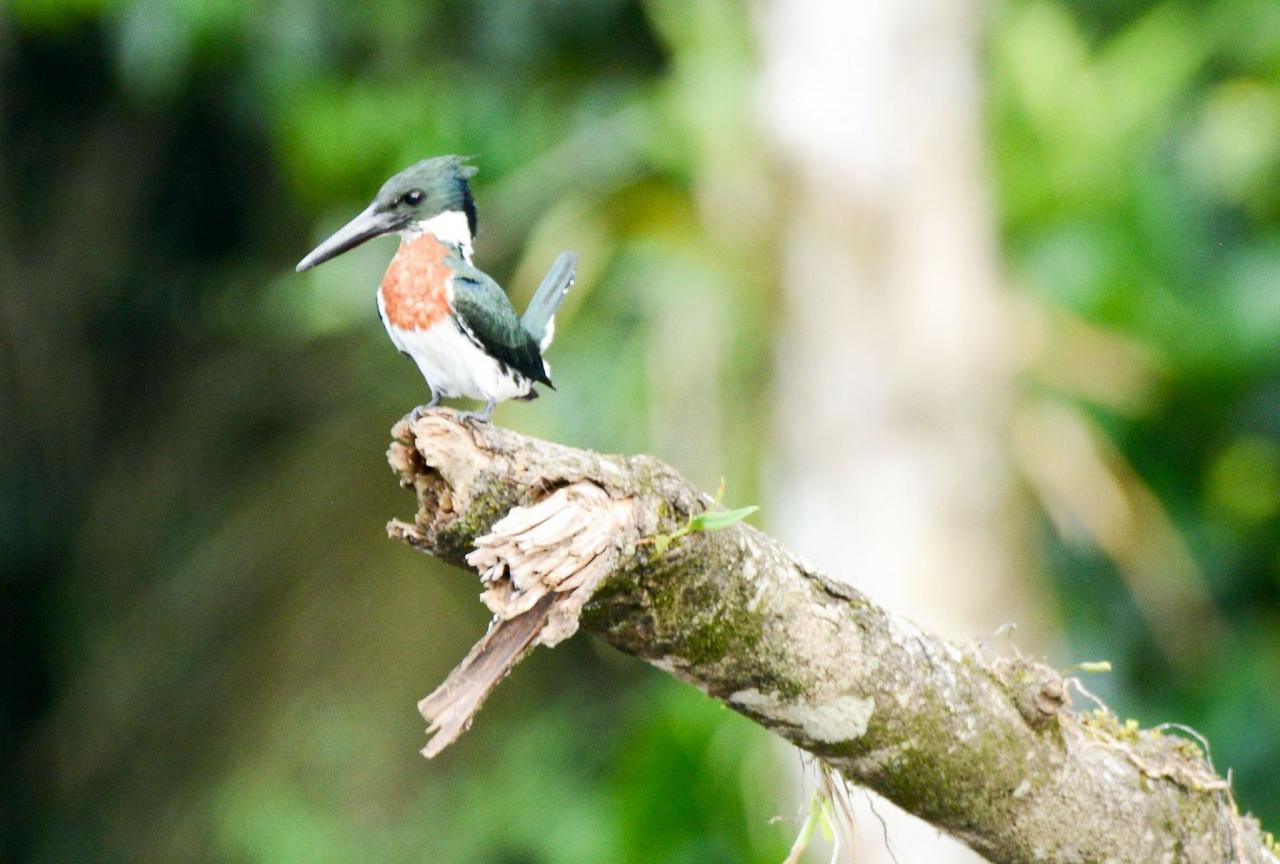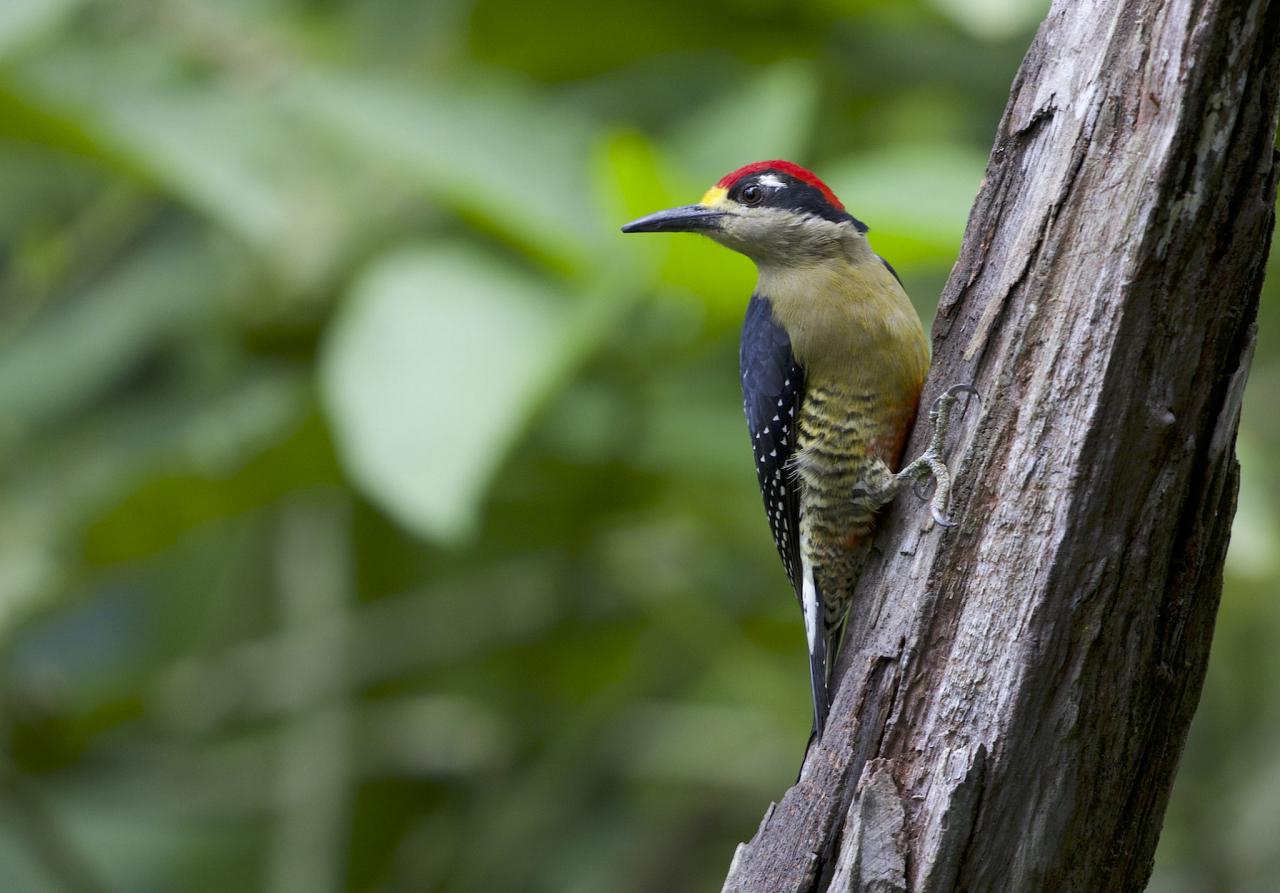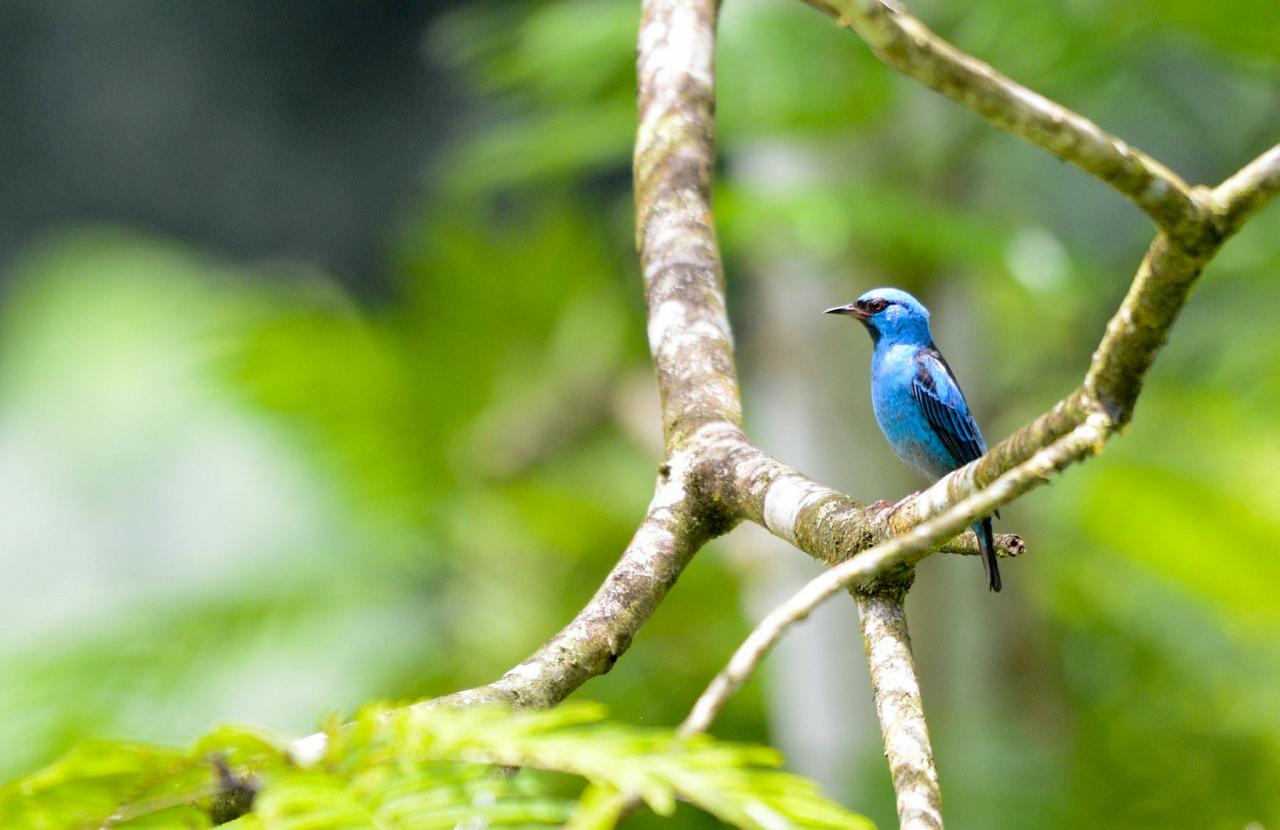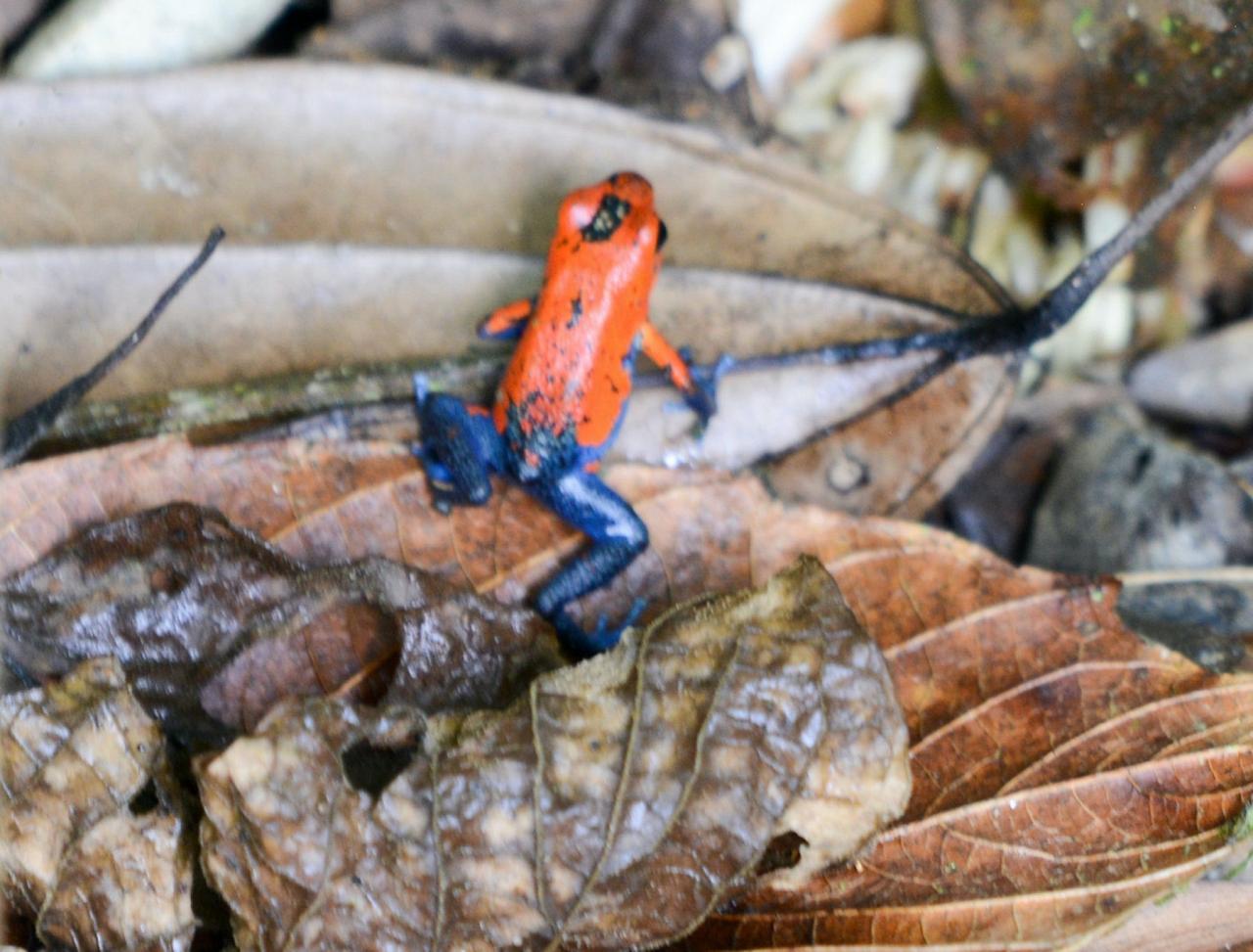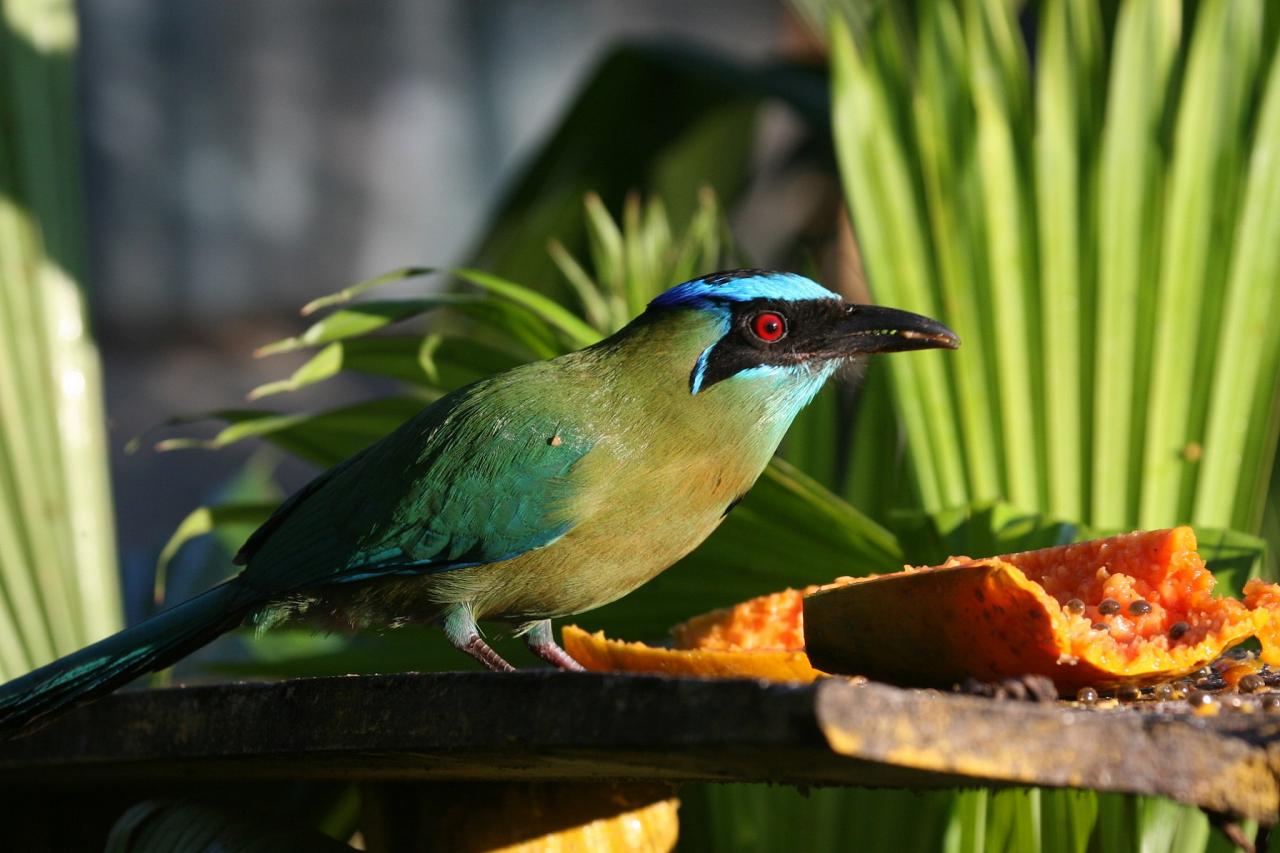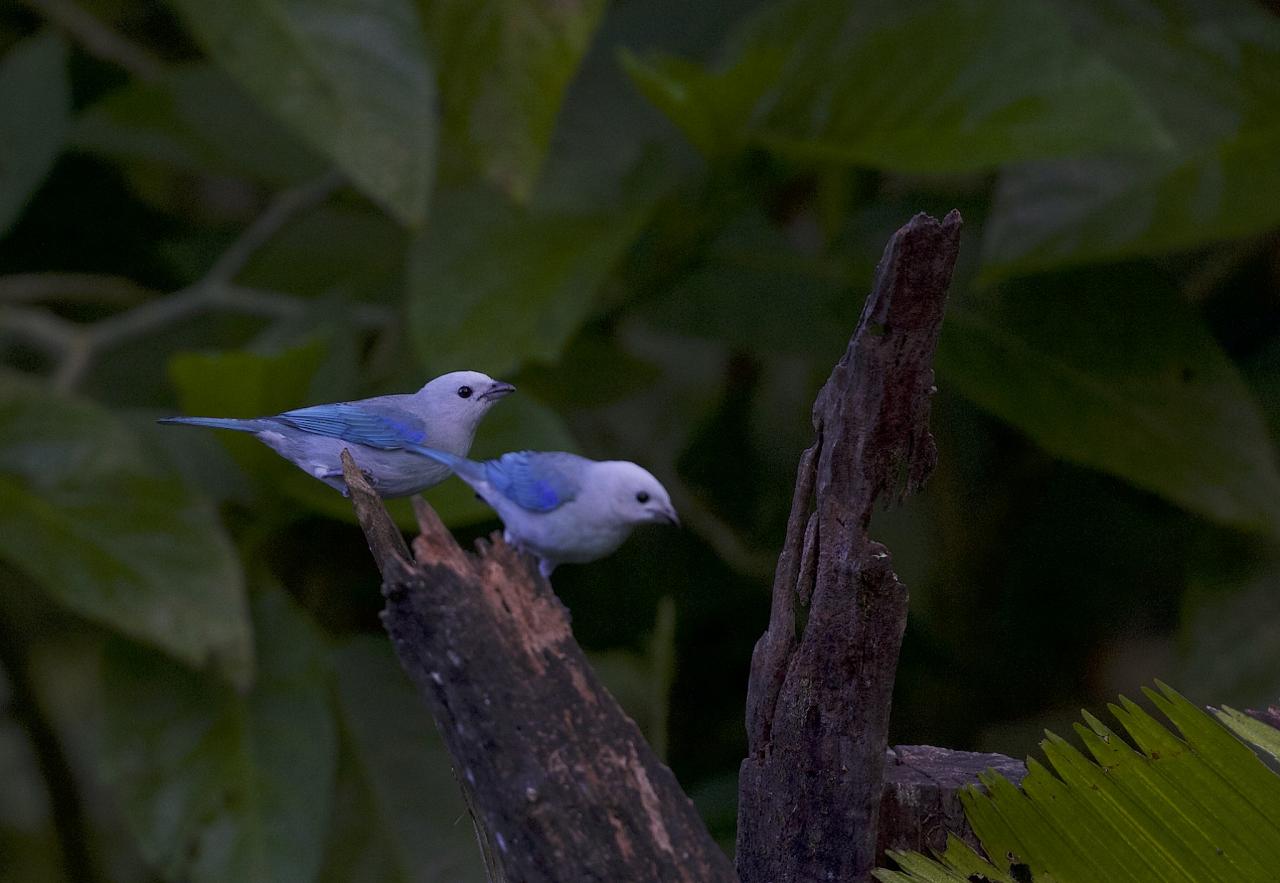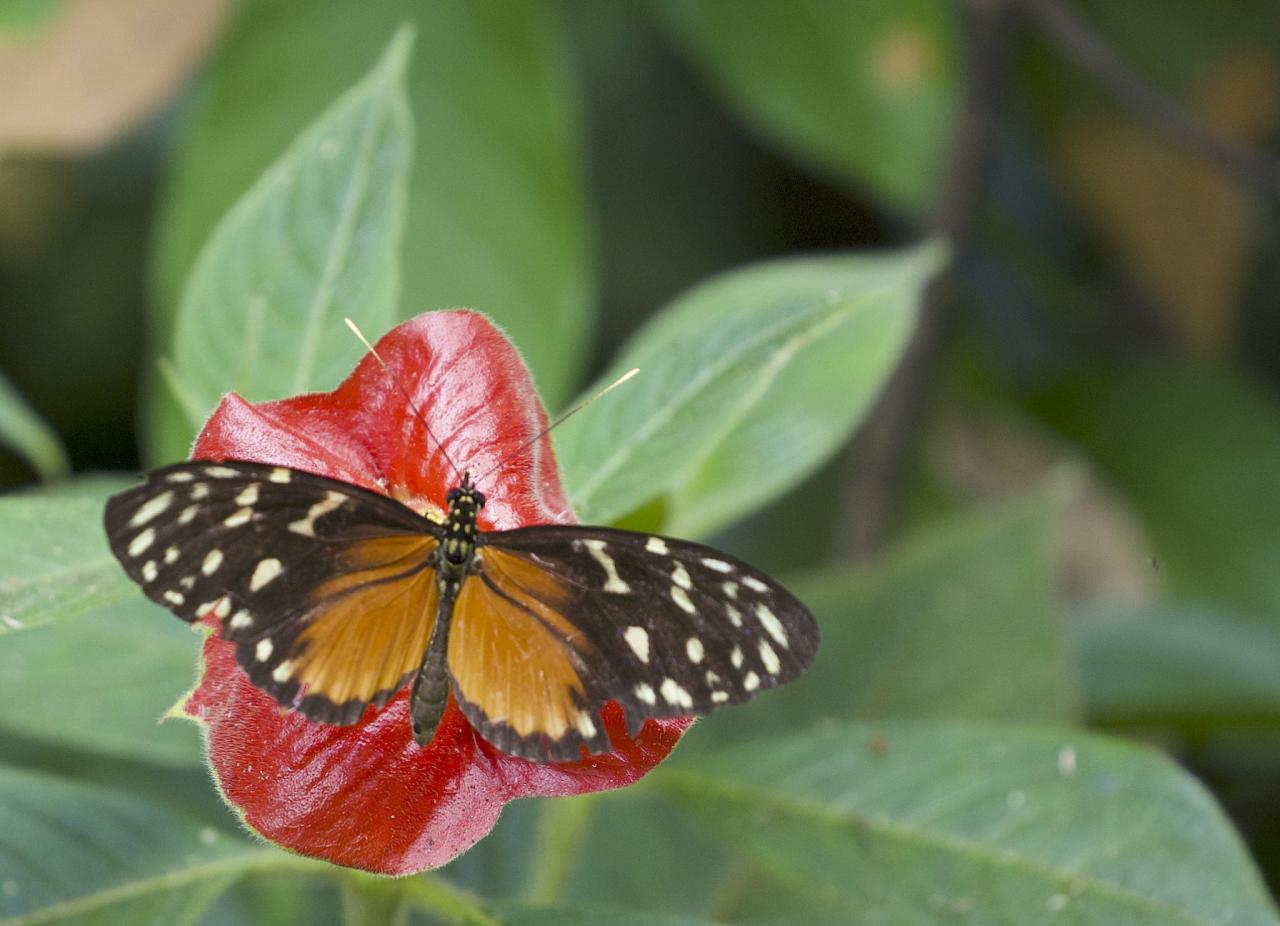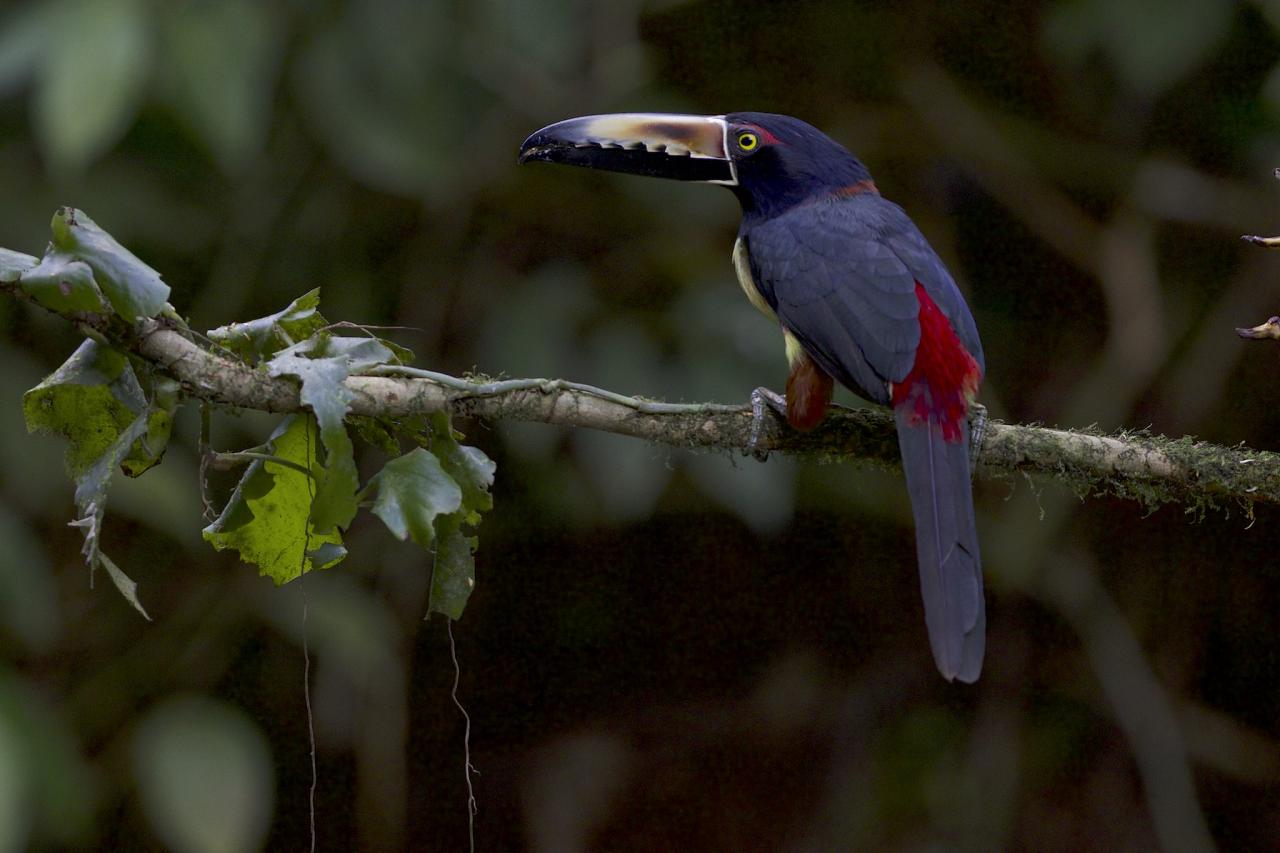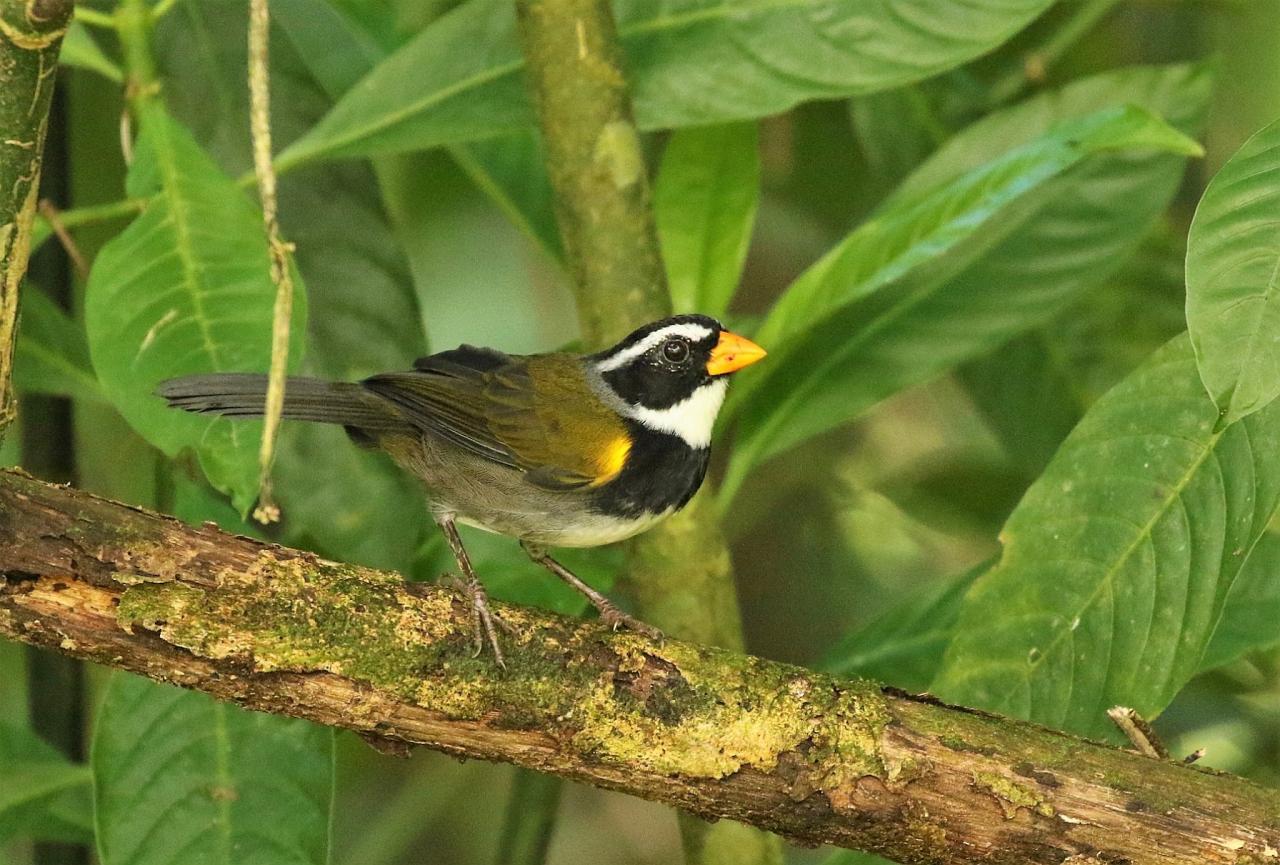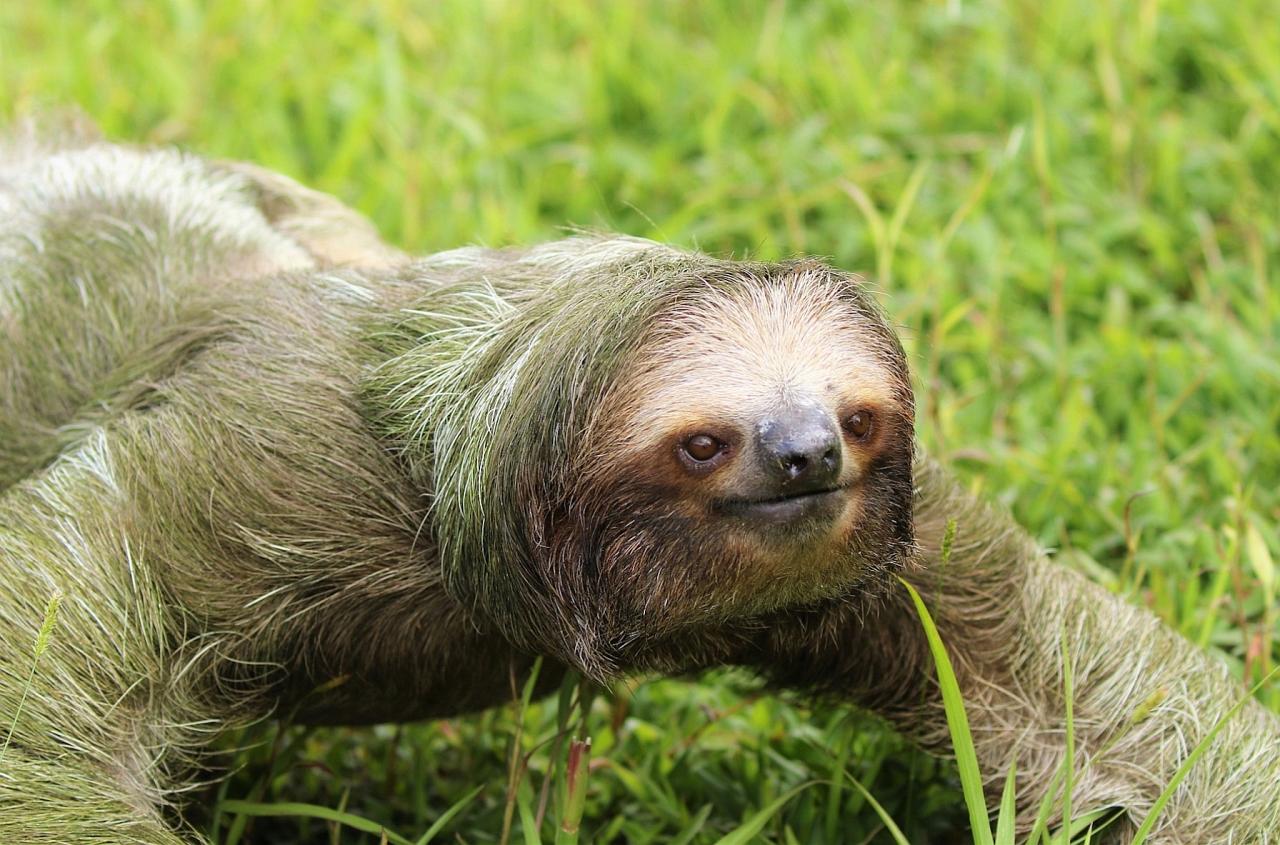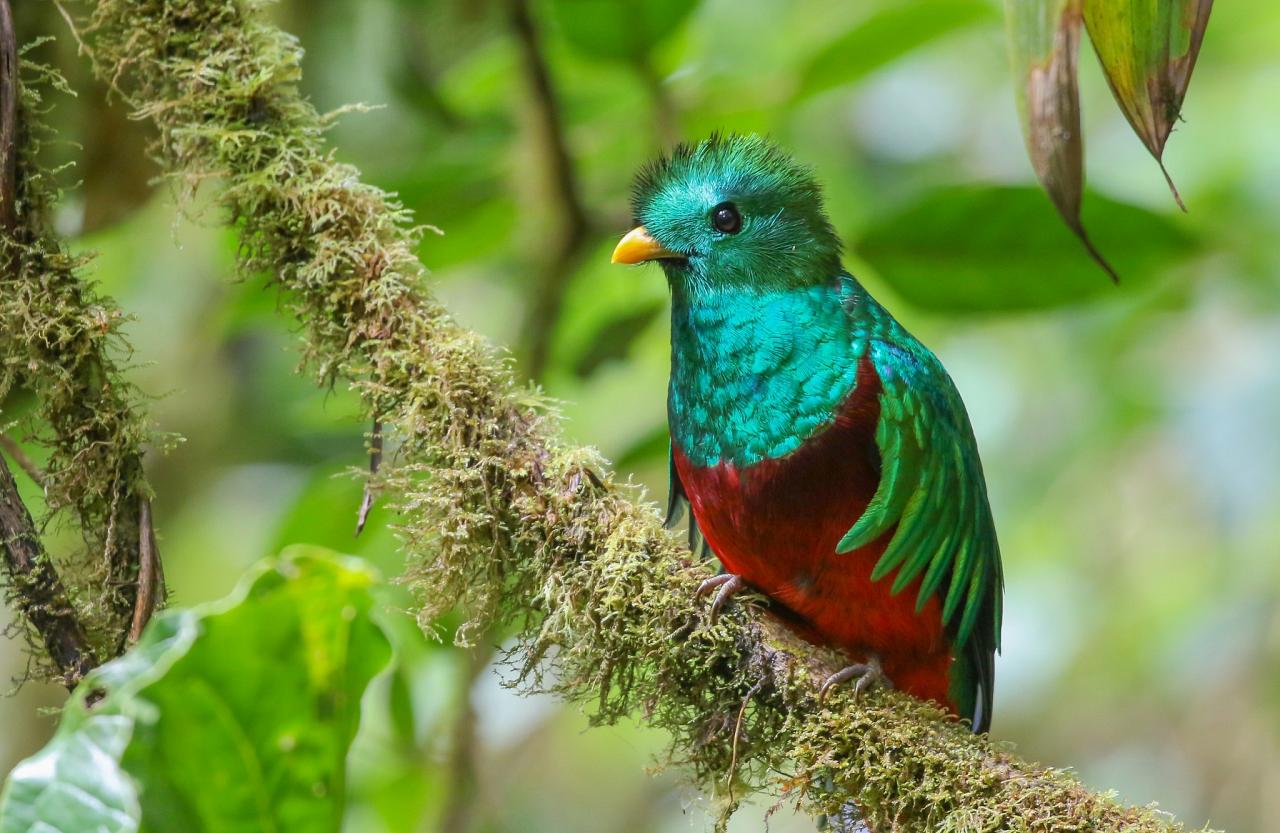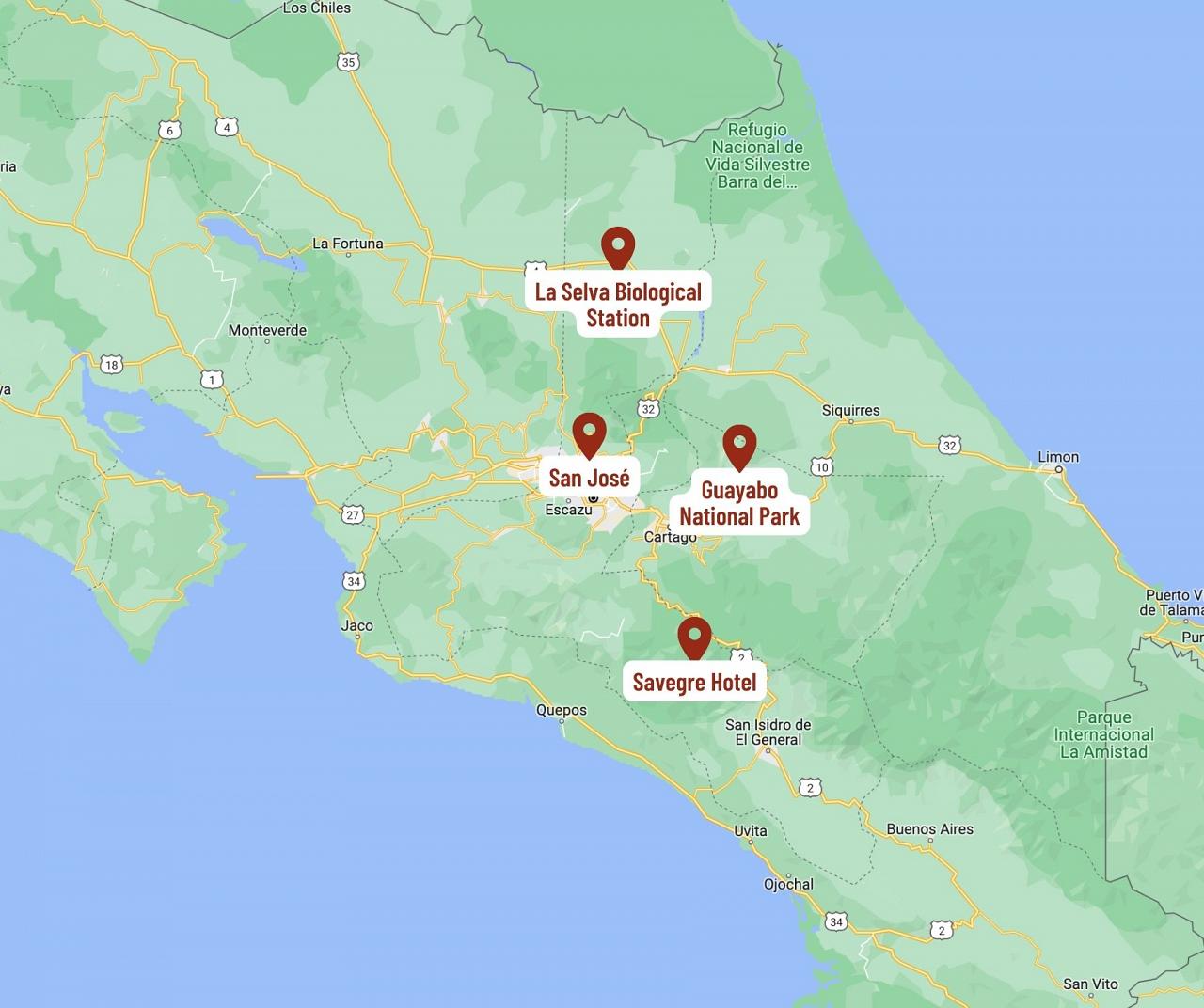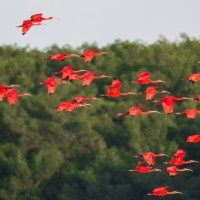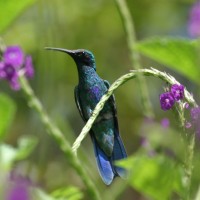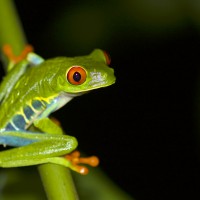- Overview
- Full Itinerary
- Photo Gallery
- Costing
- Travel Details
- Trip Reports
- Guide
- Map
- Know Before You Go
- Other Trips You May Like
Few places rival Costa Rica’s ecological diversity. Over a quarter of the country is a national park, wildlife refuge, biological reserve, or protected area. And for good reason: Costa Rica boasts 850 bird species, 208 mammal species, 50,000 insect species, and 2,000 orchids. Because of this rich diversity, Costa Rica has remained at the top of our list for traveler satisfaction, with talented guides, superb nature lodges, and fabulous birds and mammals.
This December, we invite you to celebrate the holiday season with us on an carefully-crafted weeklong tour. On this journey we traverse the Continental Divide, from lowland rainforest to cloud forest. Glide down a river looking for secretive birds such as Sunbittern and Green Ibis, several species of kingfisher, Green Iguana, and Mantled Howler Monkey. Relax at a mountain lodge and witness Northern Emerald-Toucanet and Collared Redstart in the wild Savegre Valley, a special place where Resplendent Quetzal nest and American Dipper feed in the rushing stream.
We spend several of our days on both the Caribbean and Pacific sides of the Continental Divide, with excellent field time in the highlands and lowlands. We can search for fabulous birds and mammals, have fun, taste local foods, and have time for photography if you like. We enjoy sharing in Costa Rican customs while we experience our hosts’ exceptional hospitality.
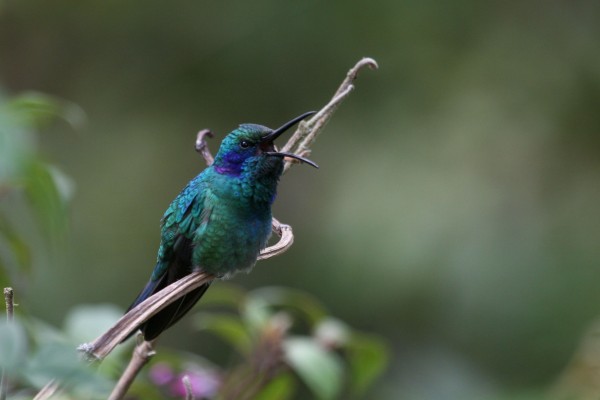
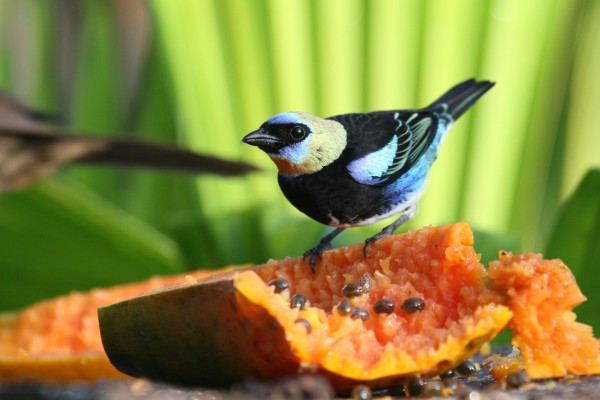
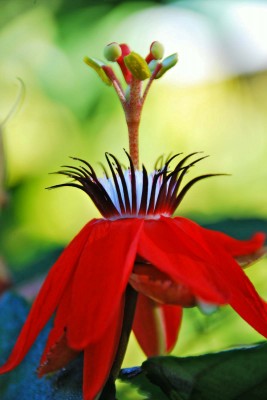
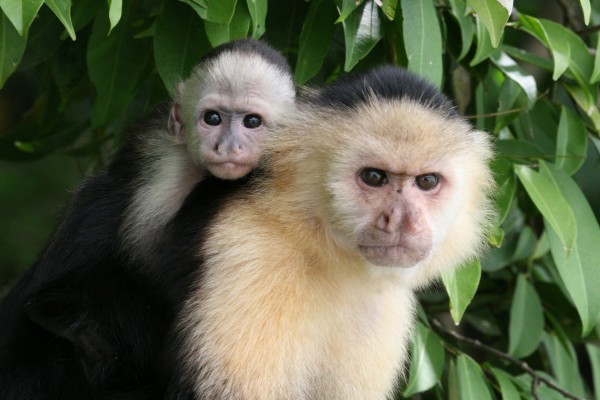
- "Incredible! Everything I hoped for and more. A great group of curious adventurers, brilliantly helpful local guides, a slew of birds but also bats, frogs, lizards, butterflies, and more!" — Matthew Cannon, 2023 Christmas Tour Participant
- "Our guide was absolutely outstanding. Extremely knowledgeable - great spotter!, kind, generous, funny. He knows the birds, the country, the field trips, the locations. He had many surprise destinations for us with beautiful scenery and lots of birds." — 2023 Traveler
- "The trip met my expectations exactly. I wanted to see lots of interesting birds and take some pictures, both of which I was able to do...It was extremely well organized and there were no logistical problems at all." — Jim Majure, 2023 Traveler
- "Magical - trip of a lifetime! An amazing exploration of beautiful places that one doesn't often hear about in CR. An abundance and diversity of birds and wildlife." — 2023 Traveler
- "Amazing! If I’d seen a fraction of the birds we saw I would’ve been thrilled..." — 2023 Traveler
- “Experienced Costa Rica from coast to coast. Had amazing guides having incredible knowledge of the birds, wildlife and fauna in Costa Rica. These guys were the best guides I’ve ever had in knowledge of birds, butterflies, habitats and general knowledge of Costa Rica. Also, they were very personable and caring to the participants.” — Caroline DePalma, 2023 Traveler
- “Superb - Birds, Bugs, Blooms, Butterflies and Best Guides! Hard to list all the highlights…Where would I start? The Great Potoo? The American Pygmy Kingfisher? The Three-Wattled Bell Bird? The Hummingbirds? The boat trips. The Eyelash Viper. The Bark Scorpion in our bathroom? How in the name of heavens did Johan and Robert find all those birds? Incredible guides! They kindly adjusted to the varied speeds and limitations of the group members. We were blessed.” — Janet Barrett, 2023 Traveler.
- “A varied and very enjoyable look at several different habitats in a country I knew little about before going there. I had three "target birds" - tiger heron, sun bittern, and swallow-tailed kite - and saw all three of them well. We had two excellent boat trips, on the Cano Negro wetlands and the Tarcoles River estuary. Saw great birds and other wildlife close-up.” — Adrienne Lovelock, 2023 Traveler
Tour Highlights
- Enjoy bright, birdy gardens right from our San José hotel
- Immerse in the stunning Savegre Valley, realm of the Resplendent Quetzal
- Explore the Caribbean side of the Continental Divide from Hotel Quelitales, home to nearly 400 species of birds
- Spend a morning in Tapanti National Park deep in the lush cloud forest
- Bird the private reserve at Rancho Naturalista
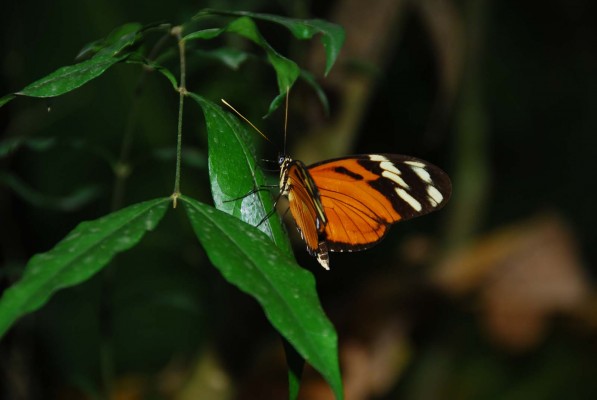
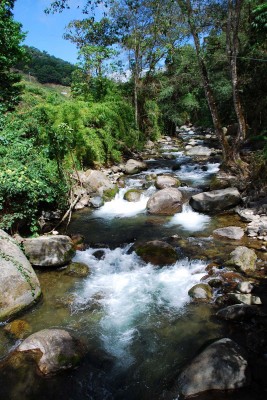
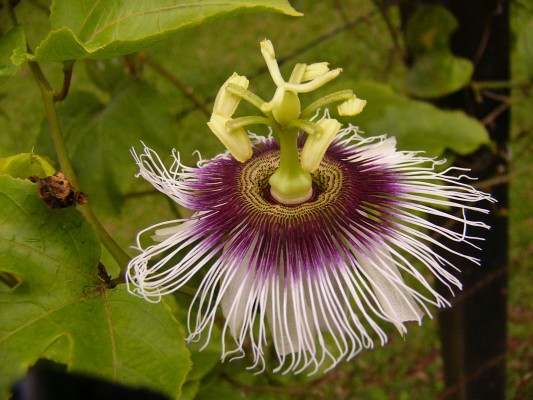
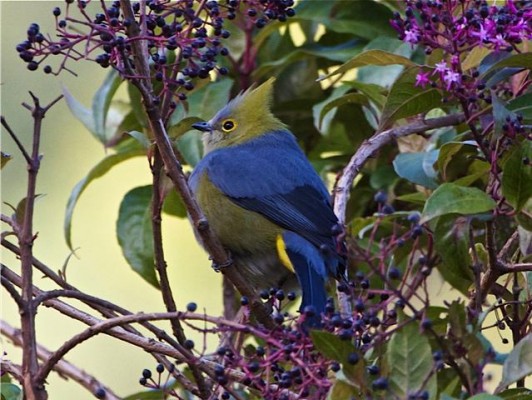
Trip Itinerary
Itineraries are guidelines; variations in itinerary may occur to account for weather, road conditions, closures, etc. and to maximize your experience.
Sat., Dec. 21 Arrivals in San José
How about Christmas in Costa Rica! Get ready for a festive time as you land in San José where you are met at the airport for a private transfer to our hotel. Those arriving in time can enjoy a welcome dinner with fellow traveling companions and your guide. Those that arrive later than dinner have a snack tray on arrival.
Accommodations at Doubletree Cariari by Hilton (D)
Sun., Dec. 22 – Tues., Dec. 24 Savegre Mountain Lodge
After breakfast we depart for Cerro de la Muerte (Mountain of Death), part of the Talamanca Mountains. These 11,000 foot peaks in view were named for early explorers who, traveling on foot or by mule, risked dying of hunger, exposure, or storms. Today our road is modern, a part of the Pan-American Highway.
As we reach the often cloud-enshrouded summit, we stop at the family-run cloud-forest reserve, Paraíso de Quetzales. Here we walk lush forest trails in search of Costa Rica’s most famous and elegant bird, the Resplendent Quetzal. Walking the cloud forest trails, we often find a host of other species as well. We then descend into the stunning valley of the Savegre River, a true realm of the Resplendent Quetzal!
Our lodge is situated at a cool 7,000 feet above sea level in an isolated and idyllic valley near the town of San Gerardo de Dota. As we descend into the valley we find a mix of pristine forest, hillside farms, and fantastic views. We stop for photographs and to see what’s in bloom along the way.
Over forty years ago, Sr. Ephraim Chacon and his brother opened a road and began a dairy farm and apple orchard in this remote Talamanca Mountain valley. Today several lodges settle naturally into the landscape here, a prime destination for birders. After settling in to our accommodations, we walk one of the lodge’s nature trails, learning about the flora and fauna of the tropical cloud forest. With luck, we spot an American Dipper feeding in the rushing trout stream! Enjoy a lovely meal tonight at the lodge’s restaurant.
We have two and a half days to explore this lovely realm, taking our time and getting know the birds and the forest trails. We enjoy excellent views of these beautiful Talamanca Range forests and their fantastic residents, like Flame-throated Warbler, Flame-colored Tanager, Long-tailed Silky-Flycatcher, Black Guan, and Northern Emerald-Toucanet. Throughout the valley, various trails lead to waterfalls, secluded canyons, and mountain vistas; several options are available to us.
Resplendent Quetzal are found in this valley year-round, and we often spot them near a favorite fruiting tree where several males may congregate. On trails that wind past rivers and lakes, we look for Collared Trogon, Collared and Slate-throated Redstart, Large-footed Finch, and Sooty Robin.
Montane oak forest dominates the area, including magnificent oaks like Wild Brazilleto, Winter’s Bark Tree, and Cipresillo. We take a stab at identifying them and then simply admire the hundreds of species of bromeliads, lichens, mosses, ferns, and the multitude of orchids and colorful flowers. Locals raise fruit on the hillsides and farm trout in small ponds.
For those that wish, a loop hike can be made up and around a ridgeline above the lodge.
Accommodations at Savegre Mountain Lodge (B,L,D)
Wed., Dec. 25 & Thurs., Dec. 26 Hotel Quelitales
We depart the stunning Savegre Valley en route to our new lodge on the Caribbean side of the Continental Divide. We stop in Cartago to visit the Cathedral, home to Costa Rica’s patron saint, La Negrita (The Virgen de Los Angeles). La Negrita resides on the main altar at the basilica.
We enjoy lunch on the way, and then arriving to our lodge, we can unpack, relax, and enjoy birding the lodge grounds. Our lodge has birdlist of nearly 400 species, and we can hope to see specialties like Highland Tinamou, Scaled Antpitta, Ochre-breasted Antpitta, Black-bellied Hummingbird, Green-fronted Lancebill, Coppery-headed Emerald, Cabanis’s ground-sparrow, and Barred Parakeet. On Christmas night, we enjoy a special celebratory dinner!
We also enjoy a morning visit to Tapanti National Park, located close to our lodge. The park records some of the highest rainfall in all of Costa Rica and protects a variety of ecosystems including cloud forests, high-altitude oak forests, premontane rainforest, and more. The park is home to some 40 mammals including Baird's Tapir, Kinkajou, White-faced Capuchin, and secretive Ocelot, and Jaguarundi. It’s nearly 500 bird species include the diminutive Snowcap, comical Boat-billed Heron, Collard Trogon, three species of motmot, Masked Tityra, and more. We enjoy the trails as we add to our birdlist!
We relax the remainder of the day, exploring around our lodge’s fine trails and soaking in a restful stay.
Accommodations at Hotel Quelitales (B,L,D)
Fri., Dec. 27 & Sat., Dec. 28 Turrialba | Rancho Naturalista
After breakfast, we drive back through the mountains toward Turrialba, where our lodge, Rancho Naturalista, lays nestled in another scenic range.
We enjoy lunch at a restaurant along our travel route and, upon our late afternoon arrival at the lodge, we enjoy birding from the veranda. This is a delight, particularly for those that fancy close-up views of hummingbirds. A number of mid-elevation Caribbean-side specialties can be found here. Temperatures are cooler at a comfortable 3000 feet. At day’s end, we are likely to see Keel-billed and Yellow-throated Toucans, and Collared Aracari coming in to roost.
Wake up and bird on the balcony where, with luck, a mixed group of colorful tanagers works the bananas on the feeders. We can hope for Passerini’s, Speckled, Bay-headed, Silver-throated, and Summer. White-necked Jacobin are regulars, and a special treat is the tiny Black-crested Coquette. Blue-crowned Motmot and Golden-olive Woodpecker are “yard birds.” Indeed, over 200 species have been seen from this balcony! Linger as we may, trails and exploring call.
Though small (125 acres), the reserve has a nice mix of habitats. Open crowns of Cecropia trees afford us good looks at colorful species like Green Honeycreeper, Squirrel Cuckoo, and Blue Dacnis. White-ruffed Manakin and Fasciated Antshrike call, alerting us to their presence along the trails. One of the trails leads us to hummingbird feeders set up in the forest. Here we often find the stunning Snowcap, alongside colorful Crowned Woodnymph, Rufous-tailed Hummingbird, and large Green Hermit.
Our final night we enjoy a celebratory dinner to recount our exciting Christmas tour.
Accommodations at Rancho Naturalista (B,L,D)
Sun., Dec. 29 Departures
We have a three-hour drive back to San Jose this morning. Please plan departure flights out after 2:00 PM. (B)
Cost of the Journey
Cost of the journey is per person, based on occupancy: $4290 DBL / $4750 SGL, from San José, Costa Rica. This cost includes all accommodations, meals as specified in the itinerary, professional guide services, other park and program entrance fees and miscellaneous program expenses.
Tour cost does not include: round-trip transportation from your home city to San José, optional activities, or items of a personal nature such as laundry, telephone charges, maid gratuities, or beverages from the bar.
Travel Details
Please plan to make air travel plans only after the minimum group size has been met. We will send you a confirmation email as soon as the trip has been confirmed.
Arrival and Departure Airport: Juan Santamaria International Airport (SJO) in San Jose
Arrival Details: Plan to arrive December 21, no later than 5:00 PM if you wish to join the group for dinner
Departure Details: Plan flight departures on December 29, after 2:00 PM
Travel Tips: If you arrive early to rest up from your travels, we can book extra nights for you with a transfer to our hotel, the Hotel Bougainvillea, which is in a residential area of the city. If you prefer to stay downtown and see the city, we have a few hotel recommendations below. If you choose to stay downtown, you’ll need to arrange a taxi or driver with the hotel to return to the airport for pickup or go out to the Bougainvillea to enjoy its gardens on the tour start date. There are many things to see in San Jose if you’re up for exploring! If you enjoy museums, you’re in luck because some of the best in Costa Rica are located right in San Jose. The Museo Nacional de Costa Rica has exhibits highlighting the archaeology and history of Costa Rica as well as a butterfly garden. The Pre-Columbian Gold Museum has one of the largest collections of gold artifacts in Latin America, some of which date back to 500 CE. If you’re looking to do some shopping or try some local food, head over to the Mercado Central (Central Market). You’ll find vendors selling fruits and vegetables, local food dishes, and a wide variety of souvenirs.
Downtown Hotel Recommendations: Hotel Presidente Hotel Grano de Oro
Entry Requirements: See "Essential Information" section under the "Know Before You Go" tab.
Browse below for trip reports and species lists from past versions of this and other tours from this destination.
Costa Rica
- January 2018
- October 2018
- January 2019
- March 2019
- January 2020
- March 2021
- December 2021 (Christmas in Costa Rica)
- February 2022
- March 2022
- December 2022
- January 2023
- February 2023
- July 2023
- October 2023
- December 2023 (Christmas Tour)
- January 2024
- February 2024
- July 2024
- October 2024
- January 2025
- February 2025 (Arenal Volcano)
- March 2025
Monteverde
- March 2022
- March 2023
- March 2024
- March 2025
Northern
- March 2012
- January 2013
- January 2017
Southern
- February 2007
- January 2017
- January 2018
- January 2019
- February 2023
-
Vernie Aikins
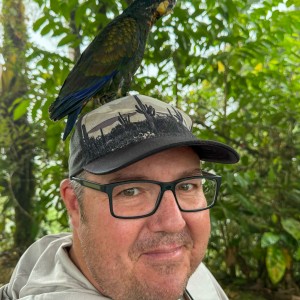
Vernie fell in love with birding in Southern Arizona in 2011 through his love of photography, starting out with just a camera and guide book. He started guiding in 2021 with his wife’s non-profit S.A.A.W.R. and the Tucson Audubon leading bird outings for people with disabilities. Though Vernie is primarily the Office Administrator at Naturalist Journeys, he does get the chance to guide from time to time. His excitement in seeing a Turkey Vulture (his favorite bird) for the 50th time or a lifer is contagious, and he has a true passion for helping others find, identify, and enjoy birds. As an avid mountain biker, he also started a non-profit focusing on trail maintenance and reopening trails after the devastating fires in the Catalina Mountains in 2003, overseeing thousands of hours of volunteer trail work. His favorite place to be is in Southern Arizona exploring along the Santa Cruz River or high up in one of the Sky Islands.
Other trips with Vernie Aikins
-
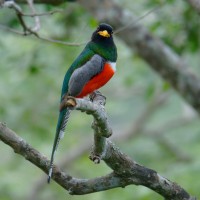 Arizona Monsoon Madness: Birding & Nature in a Season of Wonder!August 17 - 24, 2025
Arizona Monsoon Madness: Birding & Nature in a Season of Wonder!August 17 - 24, 2025 -
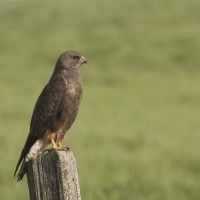 Veracruz, Mexico: River of Raptors & MoreOctober 16 - 27, 2025
Veracruz, Mexico: River of Raptors & MoreOctober 16 - 27, 2025 -
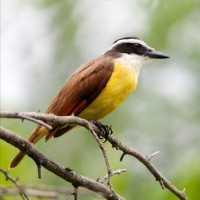 South Texas Birding & NatureNovember 10 - 18, 2025
South Texas Birding & NatureNovember 10 - 18, 2025 -
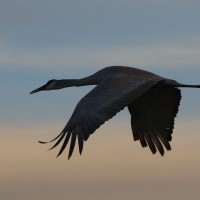 New Mexico: Winter Birds & Grand LandscapesJanuary 18 - 26, 2026
New Mexico: Winter Birds & Grand LandscapesJanuary 18 - 26, 2026 -
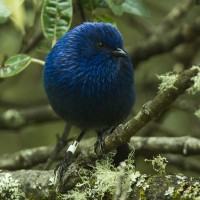 Birds & Mammals of Ecuador's Andes Conservation in Action: Sachatamia, Napo Wildlife Center & Termas de PapallactaMarch 5 - 18, 2026
Birds & Mammals of Ecuador's Andes Conservation in Action: Sachatamia, Napo Wildlife Center & Termas de PapallactaMarch 5 - 18, 2026 -
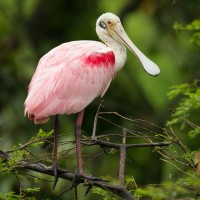 Louisiana: Birds, Bayous & BeignetsApril 16 - 22, 2026
Louisiana: Birds, Bayous & BeignetsApril 16 - 22, 2026
-
Essential Information +
Pace & Protocols +
Packing List +
Suggested Reading List +
Useful Links +
Photo credits: Banners: Green Thorntail by Willy Alfaro; Howler Monkey by Peg Abbott; Resplendent Quetzal by Greg Smith; Lizard by Sandy Sorkin; Red-eyed Tree Frog by Greg Smith; Green Violetear, Naturalist Journeys Stock; Golden-hooded Tanager, Naturalist Journeys Stock; Passion Flower by Willy Alfaro; White-fronted Capuchins by Peg Abbott; Long-winged Butterfly by Willy Alfaro; Savegre River by Willy Alfaro; Passion Flower by Willy Alfaro; Long-tailed Silky Flycatcher by Bud Ferguson; Orchid at Hotel Bougainvillea, Greg Smith; Snowcap, Sandy Sorking; Black-faced Grosbeak, Sandy Sorkin; Silver-throated Tanager, Greg Smith; Holden-hooded Tanager, Peg Abbott Maquenque Lodge, courtesy of the lodge; Resplendent Quetzal, Greg Smith; Bromeliads, Greg Smith; Flame-colored Tanager, Greg Smith; Eyelash Pit Viper, Sandy Sorkin; Savegre Mountain Lodge, courtesy savegre.com; Acorn Woodpecker, Greg Smith; Agouti, Greg Smith; Amazon Kingfisher, Sandy Sorkin; Black-cheeked Woodpecker, Greg Smith; Blue Dacnis, Sandy Sorkin; Blue Jean Frog, Sandy Sorkin; Lesson's Motmot, Peg Abbott; Blue-gray Tanager, Greg Smith; Butterfly, Greg Smith; Collared Aracari, Greg Smith; Orange-billed Sparrow, Carlos Sanchez; Three-toed Sloth, Carlos Sanchez. Resplendent Quetzal, Carlos Sanchez.






